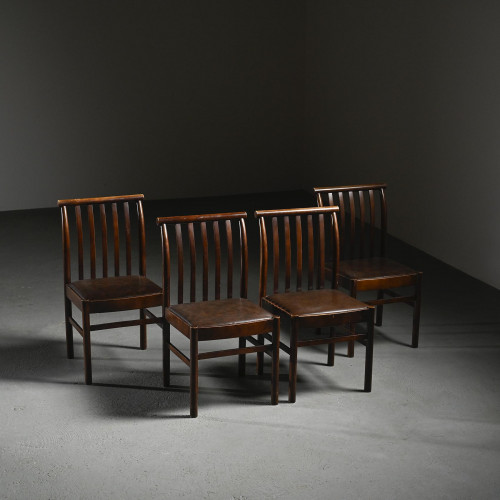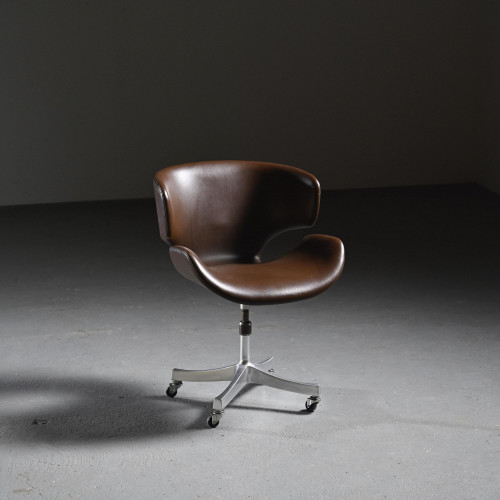Isamu Kenmochi (1912 - 1971)
Isamu Kenmochi trained at the Tokyo University of the Arts and began his career in the world of Japanese craftsmanship before shifting toward a more international approach to design. His work embodies the fusion of tradition and modernity, particularly through iconic pieces such as the "Kabuto" chair (1961), a model of simplicity and elegance, combining a metal frame with innovative materials.
His collaboration with renowned designers, such as Isamu Noguchi, was crucial to the evolution of Japanese design. Together, they worked on significant projects, such as the furniture for the famous 1958 Brussels Exposition. Kenmochi was also greatly influenced by his interactions with figures like Charles and Ray Eames, as well as Mies van der Rohe, whom he met during his travels to the United States.
In her book Japanese Design Since 1945: A Complete Sourcebook, Naomi Pollock highlights Kenmochi's importance in the establishment of modern design in Japan, emphasizing his influence in creating a Japanese design identity on the international stage. His international recognition, particularly by the MoMA in New York, with the acquisition of his creations such as the "Kabuto Chair," stands as a testament to his role as a pioneer.
Co-founder of the Japan Industrial Designers Association, Kenmochi worked to integrate design into Japanese industrial culture, laying the groundwork for an ongoing dialogue between tradition and modernity in global design.
















